Today's blog post is written by one of the REU students, Liz Ceperley. Liz is going into her senior year at Beloit College, where she is majoring in geology.
Another Day at the Office
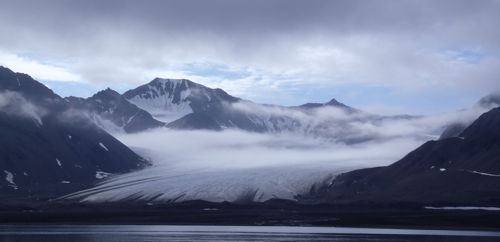
Today was the fourth day that Mark, Daksha, Rebecca and I worked together in our little Polarcirkel boat. Initially I had assumed we would mix up the personnel on the boats everyday, but now I see some advantages of keeping the team members the same. Pulling up the box core (a big metal box that scoops mud off the bottom on the fjord) and the CTDA research tool that is submerged in the water to measure conductivity (salinity), temperature, and depth. out of the water on the winch can get heavy, and often takes two of us. Simultaneously Mark (our chauffeur extraordinaire) needs keep constant sight of the cable into the water, and someone has to help manage the re-spooling of the winch cable. This all requires a certain “dance” of sorts, and we have all the different parts mastered now. We can send down and pull up scientific instruments, tie knots, churn the winch, scoop sediment, and sing summer camp songs all at the same time (all while Mark attempts to keep the boat in one place).
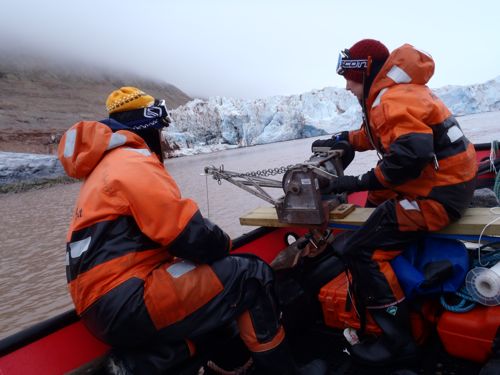
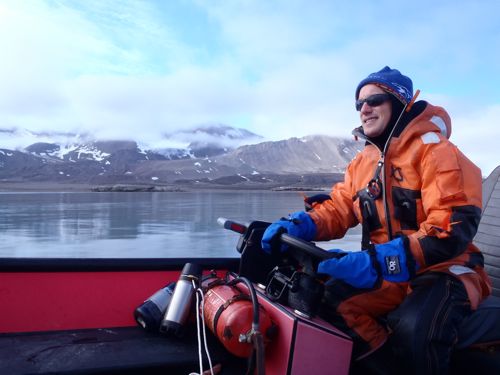
Mud, Glorious Mud!
It looks like milk chocolate pudding, very soupy and so fine grained that it almost looks silky. All the samples in the plastic bags look the same, but during my project I hope to find the differences between them. There are three main sources that add sediment to the fjord, besides the Kronebreen and Kongsvegen glaciers. I am taking water samples from each of these sources in order to characterize them and understand how they are difference from one another on a mineralogical scale. I hope to have around 28 box core samples, so chunks of soupy mud from the floor of the floor. I am going to dry them out and then at Beloit in the fall I will analyze to see how the sediment sources are distributed within the fjord. This will mostly be done using X-Ray Diffraction (XRD) which is used to help identify the clay minerals present. Hopefully I can make different maps of the fjord that show the distribution of the different sources and even other things present in the sediment, like the biologic material.
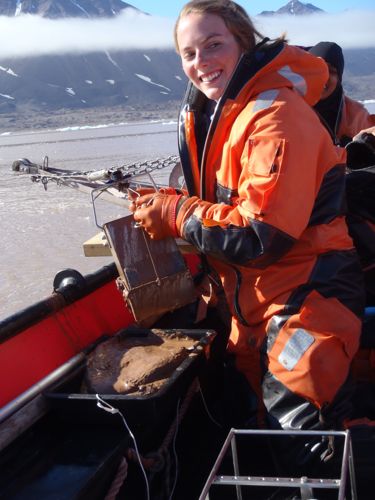
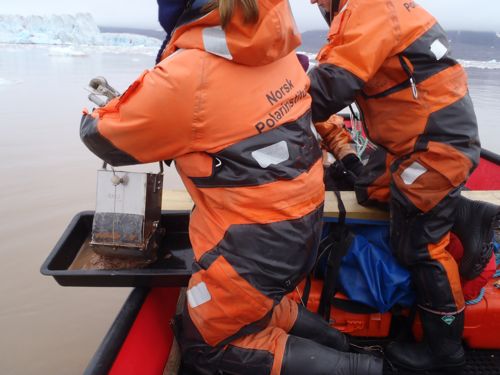
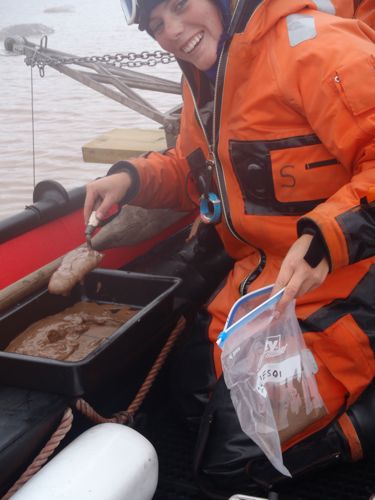
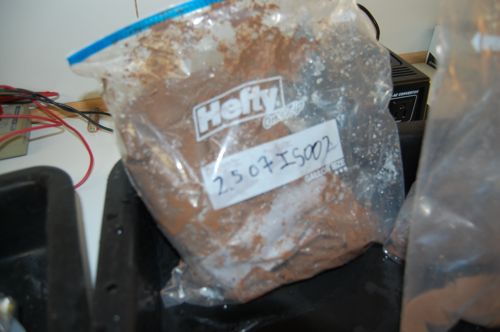
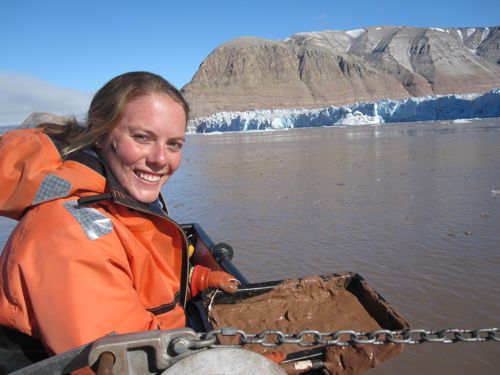
Today we had first-hand experience of chasing "bergie bits" or "iceberg wrangling", as I like to say. We would spot an iceberg that was covered in sediment, then chase it down. Glacial till is often stuck on to icebergs, and this is the stuff that makes the iceberg brown. Till is the mix of clay and sand and gravel that forms moraines and the stuff that glaciers drag down the valleys with them. Looking at the composition of the till will be useful for my project because I can see the distribution of the bedrock in the till. So does the gravel come from the mountains on the north or the south of the glacier (for example). Near the end of our afternoon today we witnessed an enormous chunk of the glacier front calve, maybe 30 meters wide. We chased down a dirty "bergie" and chipped away some till from it. We even went under an overhang on the iceberg! We are turning Kongsfjorden into the Wild West.
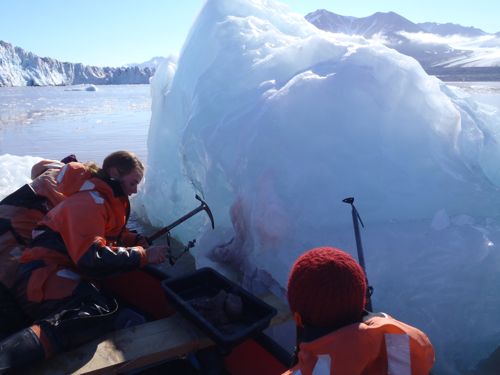
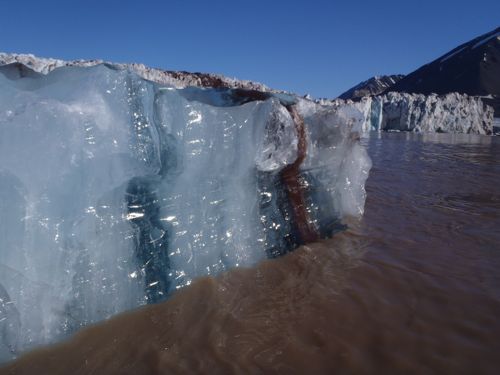

Why I Love Rocks and Dirt
I have always been drawn to projects that involve really large things that I can touch and see, like mapping steam vents in a crater or mapping glacial features like moraines. So the idea that my senior thesis will be about clay mineralogy makes me nervous, but I am also really excited because I will know I will learn a lot.
Growing up I liked all my classes the same, and never really considered myself a very “sciency” person. Beloit pushes its students to take classes in lots of fields before choosing a major, but after taking my first geology class during the fall of my freshman year, I knew I had to major in it. How could I turn down majoring in something where camping trips to beautiful places are a requirement and colored pencils are needed for every class? It’s so much fun! Once I learned more about geology I realized that my favorite childhood memories were spending time in the Rockies with my family, and I had always wanted to study why landscapes and mountains looked the way they did. I’m from Illinois, so seeing mountains always meant vacation for me, and we made the long drive twice a year for skiing and backpacking trips. I remember crying a little once as we drove east out of Denver because I didn’t want to leave the mountains.
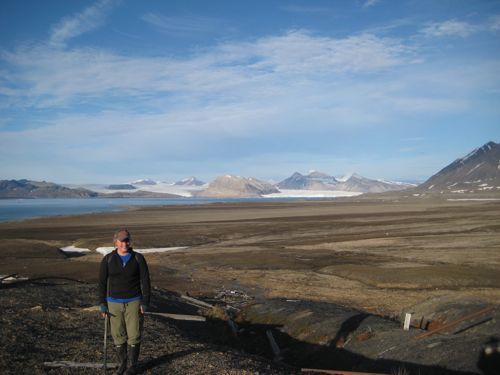
Life in the Arctic
I have had a blast so far during my REU experience, and I am looking forward completing the rest of our fieldwork. Everyday we chip a little away at all the data we have to collect, and I know we will finish by the time we leave. Ny-Alesund has sort of the ski lodge atmosphere, with everyone coming to dinner in their outdoor clothes and wind burned faces. I’ve never lived in a tourist destination before, so its kind of fun to have the cruise ship tourists walking around and asking us questions. This place is absolutely stunning, I can see why they choose to spend their vacations here.
I am so thankful to have this opportunity to conduct fieldwork and research in such a pristine area where relatively few people have been. Today we had a special moment when we pulled up our first full box of sediment, a seal swam by our boat, and Kronebreen glacier calved, all at the same time.
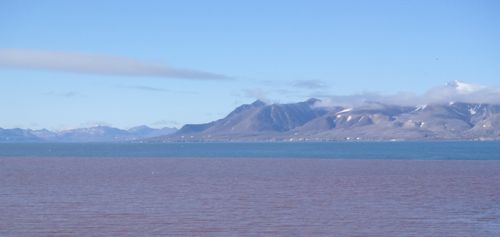


Comments